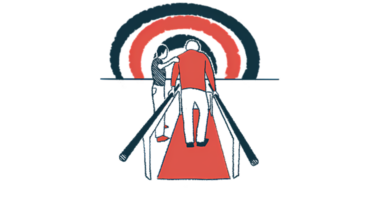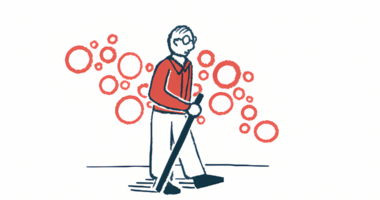Exercise to aid balance, using phone app, helps older adults
Small study finds posture and walking gains, plans to adapt for Parkinson's

A four-week exercise program to improve balance, directed by a smartphone app, can help older adults walk at a faster pace and correct their posture, a study has found, features that may help to prevent falls, a common complication of Parkinson’s disease.
The app, being developed by scientists at Binghamton University in New York, took users through a series of self-guided, 30-minute workout sessions that can be done at home. Most adults in the small study said they enjoyed the exercise program.
“The app is a viable alternative to paper and can be safely used to deliver balance interventions to a person’s phone,” Suzanne O’Brien, PhD, an associate professor of physical therapy at Binghamton and one the study’s principal investigators, said in a university news release.
“We want to take some next steps to use the app to deliver exercises and prevent falls in older adults in this [rural] area,” O’Brien added. “Later on, we’d like to do the same in some patient groups, such as Parkinson’s.”
Balance and gait difficulties of Parkinson’s raise a risk of falls
The study, “Smartphone- and Paper-Based Delivery of Balance Intervention for Older Adults Are Equally Effective, Enjoyable, and of High Fidelity: A Randomized Controlled Trial,” was published in the journal Sensors.
Parkinson’s is caused by the loss of nerve cells that produce dopamine, a signaling molecule that plays a role in controlling movement. This leads to disease motor symptoms, such as tremor, stiffness or rigidity, and difficulties with balance, that increase the risk of falling.
Like older adults in general, those with Parkinson’s also experience changes in how they walk, often exhibiting a distinct way of walking known as parkinsonian gait. It is marked by small and shuffling steps, reduced swinging of the arms, a forward-leaning posture, difficulty turning, and occasional episodes of freezing of gait.
“As you get older, you need to be aware of your body’s ability to maintain balance while standing and walking,” and of your ability to “do two tasks at the same time” — an ability that can be “compromised” with age, said Vipul Lugade, PhD, who directs the Motion Analysis Research Laboratory at Binghamton University and is the study’s other co-principal investigator.
While exercise can help to improve balance, “home-based training programs for older adults are often delivered via instruction by physical therapists or rehabilitation experts and through the medium of paper for instruction and logging of activity,” the investigators wrote.
Researchers designed a study (NCT05140044) to investigate whether a four-week, home exercise program would improve balance if it was delivered via a smartphone app to people older than age 65. Gait speed and balance were evaluated using special equipment in their lab.
All 12 workout sessions were completed by 29 older adults, with 14 randomly assigned to the smartphone app group and 15 following a standard paper-based exercise program. The average time spent in each session was similar in both groups (45 vs. 40.5 minutes).
Smartphone users reported the app was useful, allowed them to complete tasks more quickly, and made exercising easier. There were no differences between the groups in how much participants enjoyed the exercise program, or how difficult or lengthy they considered it.
Gait speed and balance were evaluated before the study and again four and eight weeks later using motion-capture gear and a computerized dynamic posturography system that monitors body movements and pressure on a stable or moving surface.
Older adults showed changes in step width, walking speed over 4-week program
After four weeks of exercise, the step width of smartphone users was reduced by 2.1 centimeters (about 0.8 inches) as they walked 10 meters (about 33 feet) while saying as many words as possible that started with a particular letter.
“The reduced step width in the smartphone group … [was] indicative of altered strategies to maintain balance during the more demanding dual-task walking conditions,” the scientists wrote.
“An impaired ability to simultaneously perform cognitive tasks while maintaining balance is associated with increased risk of recurrent falls,” they added, so the change in step width may help in preventing falls.
Smartphone users also gained 0.06 meters (about 2.4 inches) per second in gait velocity over the study’s four weeks. And they adopted better balance strategies as they stood up or walked.
These scientists are collaborating with Lijun Yin, PhD, a computer scientist at Binghamton, to design a dashboard that tracks performance metrics and compares them with what would be considered normal ranges, likely for their age and sex. A goal is to be able to share these metrics with a person’s doctor, and eventually send updates automatically based on real-time records.
Study limitations included its small size and participants who were all “white, highly educated, and active members in the community,” the researchers wrote.
“While it is unclear how generalizable the findings will be to a more diverse group of older adults, the benefits of home-based delivery of intervention should continue to be investigated,” they added.







